Hormonal Therapy for Endometriosis
Hormonelle Therapie bei Endometriose
Endometriosis results from the growth of endometrial cells outside the uterus. While influenced by female sex hormones (estrogens and progesterone/progestagens), it cannot be cured.
The appropriate therapy for endometriosis varies individually and often involves a combination of different treatments (see Overview).
Drug therapies that impact hormonal balance are commonly used alongside surgery to prevent recurrence, manage symptoms, and sometimes as an alternative to surgery/re-surgery. These therapies work by reducing estrogen levels and increasing progesterone levels and are tailored based on symptoms, risk profiles, and life plans.
The three primary treatment options are:
- Pure progestogen in pill form or as an intrauterine device (IUD)
- Single-phase progestogen and estrogen combination pills (micropills), depending on the progestogen used
- GnRH analogs (with declining relevance)
1. Progestogen Therapy
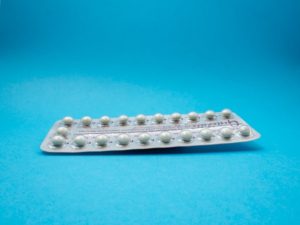
Dienogest, a progestin, is the most frequently employed hormonal therapy for endometriosis.
Progestin (also known as progesterone or corpus luteum hormone) is a female sex hormone. It is available in various synthetic forms, commonly found in contraceptive pill preparations.
Therapy with progestins has been shown to reduce pain and improve overall symptoms in endometriosis.
Dienogest, a specific progestogen, has demonstrated significant improvement in endometriosis symptoms through various large-scale studies. It has been found to reduce endometriosis lesions and inhibit the formation of new nerves in affected regions, directly addressing the cause of pain [2].
Dienogest is the only progestogen officially approved for endometriosis therapy and is usually administered in a long cycle. [2]

Hormonal Intrauterine Device (IUD)
The hormonal coil is an effective hormonal therapy for endometriosis, particularly beneficial for women with endometriosis in the uterine wall (adenomyosis), due to its localized hormonal effect.
Read more about Dienogest in endometriosis …
2. Einphasige Kombinationspräparate

Combination pills contain estrogen and progestin.
Combination pills, commonly known as “the pill”, are widely used among women. They consist of a combination of two hormones, estrogen and progestin. In single-phase combination pills, all the pills in the pack contain the same combination of hormones, making them consistent throughout the month.
While combination pills and the hormone-releasing IUD have been shown to alleviate symptoms, especially in the long cycle, they are not officially approved for endometriosis therapy in Germany. However, they can be used after informing the physician, which is known as “off-label use.”
Various progestogens found in combined pills have demonstrated effectiveness in reducing endometriosis symptoms, particularly in the long cycle. Among them, Dienogest is the best-studied and approved progestogen, as previously mentioned. Combination pills with Dienogest are suitable and can provide pain relief due to the absence of the menstrual period. For other progestins, the strengths of their effect on endometriosis symptoms may vary [1,2,4].
3. GnRH Analogs
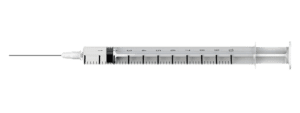
GnRH analogs are administered by injection.
GnRH analogs work by reducing estrogen production through the brain’s hormonal axes, thereby slowing the growth of endometriosis.
In recent times, the use of GnRH analogs in endometriosis therapy has decreased. These analogs cause a significant reduction in estrogen levels comparable to menopause, leading to stronger side effects. Typically, they can only be used for a limited period, around 6 months. To manage menopausal symptoms like hot flashes and bone disorders, small doses of estrogen must be taken in addition (add-back therapy).
Due to the prevalence of side effects and the emergence of new progestin therapies, GnRH analog therapy is taking a back seat and is rarely employed nowadays.
Further Notes on Hormonal Therapy
Hormones play a crucial role in influencing the endometriosis cells and foci. In simplified terms, estrogen promotes endometriosis, while progestins inhibit it. Therefore, hormones offer a promising therapeutic approach in managing this condition.
However, the timing and duration of hormone use are essential factors to consider. It is vital to discuss the side effect profile with your doctor before starting hormone therapy.
The decision regarding hormone therapy should always be individualized, considering the side effect profiles and your specific life situation. In some cases, health insurance coverage can be requested.
Progestogens and Combined Pills – Long Cycle Therapy
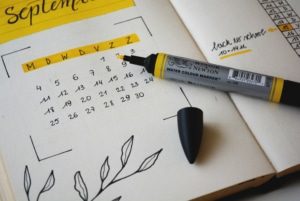
Long-cycle therapy
Progestogen therapy or combined preparations (with combinations of estrogen and progestogen) have shown significant improvements, particularly in long-cycle therapy. This involves taking the pills continuously for several months, with breaks every 3 to 12 months. The absence of bleeding during these breaks is expected to prevent the development of new foci and reduce pain.
For individuals experiencing painful periods, the guideline on hormonal contraception recommends taking the pill on a long cycle (i.e. without a break).
There is no evidence of increased risks associated with long-cycle hormonal contraception compared to normal use with monthly breaks. [1]
Postoperative Hormonal Therapy for Endometriosis

Hormonal therapy after surgery
After surgery, approximately 40-50% of cases experience new endometriosis lesions or symptoms within the first 5 years. As post-operative prophylaxis to suppress or slow down the recurrence of endometriosis, progestogen therapy (typically with Dienogest) is often recommended immediately after surgery [3].
In instances of multiple recurrent endometriosis, progestin administration can extend the time between surgeries in certain cases [3].
Dependence of the Therapy Choice on the Life and Complaint Situation
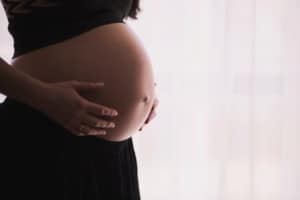
Life situation: a desire to have children
Especially in young women or suspected cases without complications and no evidence of bowel involvement, hormone therapy with progestins (Dienogest) or combination preparations is also offered as an alternative to surgical therapy. It is significantly less invasive and can provide relief over an extended period.
However, it is important to note that hormonal therapy cannot completely cure endometriosis. After discontinuing the therapy, the symptoms usually return.
Additionally, due to the contraceptive effect, this type of therapy is only of limited use for those currently desiring to have children.
Assumption by the Health Insurance Companies
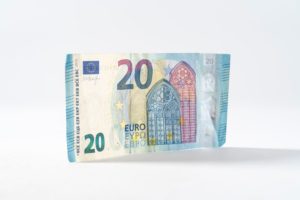
Übernahme durch Krankenkasse
Die Therapiekosten werden bei Dienogest in der Regel von den gesetzlichen und privaten Krankenkassen übernommen (ggf. mit Zuzahlung). Wichtig ist hierbei die zur Verordnung führende Diagnose.
Eine zur Verhütung oder off-Label zur Endometriose verschriebene Pille muss oft privat bezahlt werden. Jedoch gibt es die Möglichkeit, mit dem behandelnden Arzt einen Antrag bei der Krankenkasse zur Kostenübernahme zu stellen. In diesem Antrag muss der Arzt erläutern, aus welchen Gründen die Patientin nicht die zugelassenen Therapiemöglichkeiten nutzen kann (beispielsweise wegen zu starken Nebenwirkungen). Ob der Antrag zur Kostenübernahme bewilligt wird, entscheiden die Krankenkassen im Einzelfall.
Im Alter unter 20 Jahren übernehmen die Krankenkassen auch alle zur Verhütung verordneten Pillenpräparate.
Du möchtest noch mehr über die Therapiemöglichkeiten von Endometriose erfahren? Dann lade dir die Endo-App herunter und profitiere vom Wissen unserer Endometriose-Expert:innen.
References
- Current Research on Endometriosis: An Interview with Deborah Bush - 6. February 2024
- Pain and Pain Management – Interview with Rehab Psychologist Teresa - 19. November 2023
- Physiotherapy for Endometriosis – Interview with Annika Cost – with Exercises - 19. November 2023

